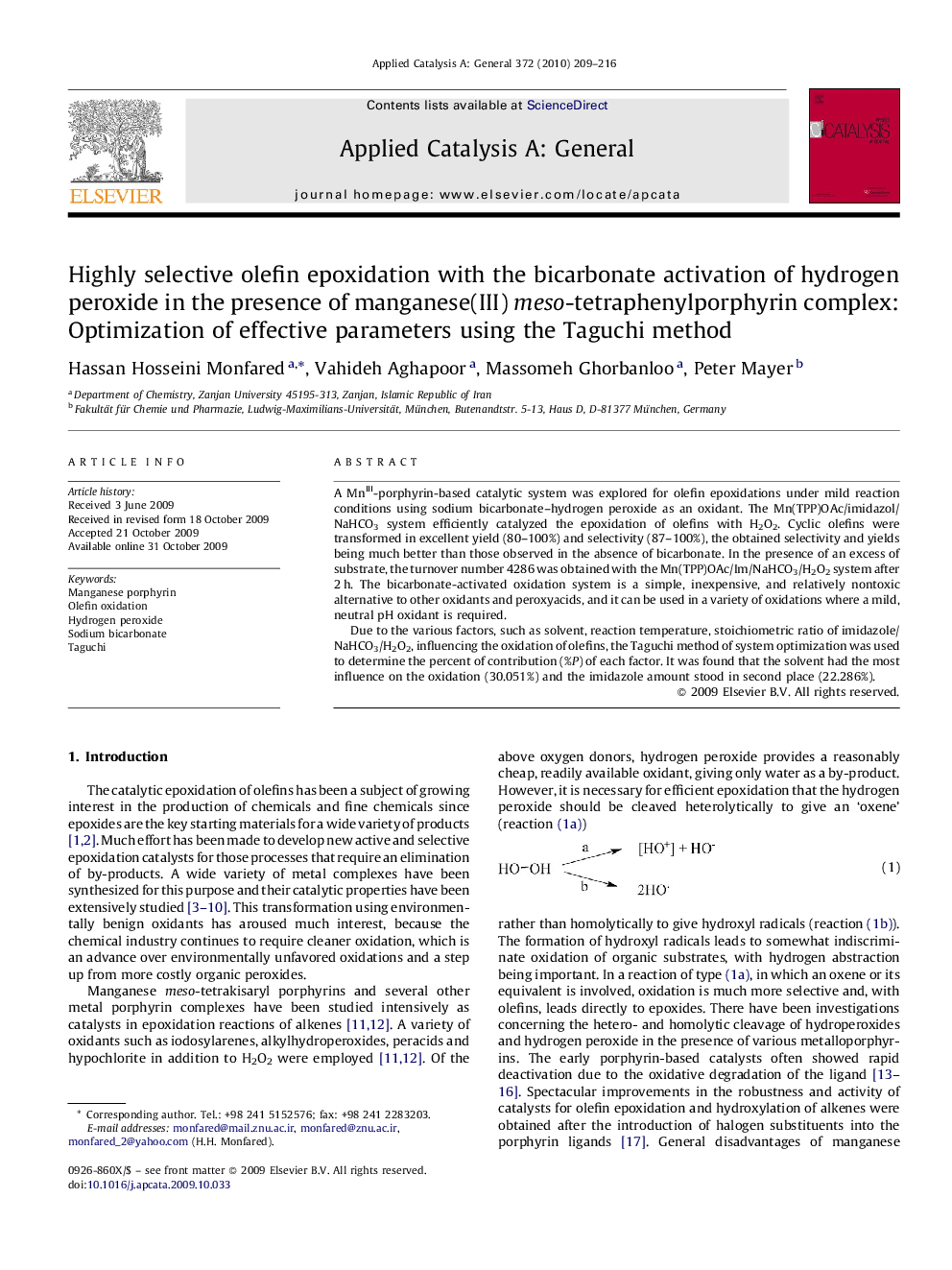| کد مقاله | کد نشریه | سال انتشار | مقاله انگلیسی | نسخه تمام متن |
|---|---|---|---|---|
| 42295 | 45919 | 2010 | 8 صفحه PDF | دانلود رایگان |

A MnIII-porphyrin-based catalytic system was explored for olefin epoxidations under mild reaction conditions using sodium bicarbonate–hydrogen peroxide as an oxidant. The Mn(TPP)OAc/imidazol/NaHCO3 system efficiently catalyzed the epoxidation of olefins with H2O2. Cyclic olefins were transformed in excellent yield (80–100%) and selectivity (87–100%), the obtained selectivity and yields being much better than those observed in the absence of bicarbonate. In the presence of an excess of substrate, the turnover number 4286 was obtained with the Mn(TPP)OAc/Im/NaHCO3/H2O2 system after 2 h. The bicarbonate-activated oxidation system is a simple, inexpensive, and relatively nontoxic alternative to other oxidants and peroxyacids, and it can be used in a variety of oxidations where a mild, neutral pH oxidant is required.Due to the various factors, such as solvent, reaction temperature, stoichiometric ratio of imidazole/NaHCO3/H2O2, influencing the oxidation of olefins, the Taguchi method of system optimization was used to determine the percent of contribution (%P) of each factor. It was found that the solvent had the most influence on the oxidation (30.051%) and the imidazole amount stood in second place (22.286%).
The Mn(TPP)OAc/imidazol/NaHCO3 system efficiently catalyzed the epoxidation of olefins with H2O2. Cyclic olefins were transformed in excellent yield (80–100%) and selectivity (87–100%). Due to the various factors, e.g. solvent, reaction temperature, imidazole/NaHCO3/H2O2, influencing the oxidation of olefins, Taguchi method of system optimization was used to determine the percent of contribution (%P) of each factor.Figure optionsDownload high-quality image (44 K)Download as PowerPoint slide
Journal: Applied Catalysis A: General - Volume 372, Issue 2, 15 January 2010, Pages 209–216